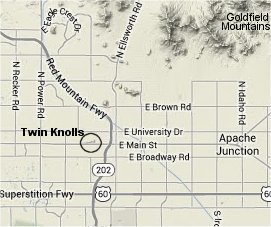|
Quartz/Silica Dust
One of our concerns with mining activities on Twin Knolls is release of crystalline silica.
Crystalline silica comes in several forms, with quartz being the most common.
Regulations on silica emissions and non-occupational exposures are fairly new,
and monitoring requirements and techniques are not yet standardized. publiclab.org
The difference between visible, inhalable, and respirable dust: marctech.com.au
Quartz dust is respirable crystalline silica. cancer.gov
Here's more information on respirable quartz: silica-safe.org
Silicosis is a lung disease caused by breathing in respirable silica: lung.org
This Australian site has more info on silica dust: cancer.org.au
In the section - Air monitoring for silica dust - when talking about exposure limits, they note:
"there is no evidence to support a safe level of silica dust exposure"
Here is info on OSHA's current limits for respirable silica exposure: osha.gov
Unfortunately, they still only focus on workplace exposure, probably because it was never considered likely
that an entire neighborhood could be this exposed to quartz dust for a decade or more.
In 2019 MSHA accepted comments on proposed new restrictions on silica dust.
Here are those comments: msha.gov
List of Links
If you've seen a link elsewhere on this site but can't find it now, it may be here.
The video of the January 26, 2021 Custom Landscape Public Hearing is available Here.
To listen to the audio recording of the December 8, 2020 Air Quality meeting click Here
Sample Emails to our Members of Congress
Links to the Twin Knolls flyers to notify neighbors in English and Spanish
The permit request and air quality rules:
Permit Application Rule 316 Rule 316 Handbook
Arizona Revised Statute
ARS 11-812
Title 11 regulates Counties. Chapter 6 regulates County planning and zoning.
ARS 11-812 severely limits the ability of a County to control mining activity.
There is NO EXCEPTION for County Islands, leaving County Islands vulnerable to
extremely inappropriate mining activity, even in the suburbs of America's 5th largest city.
ARS 11-812 became law in 2010, not 1910. What was our State Legislature thinking?
Audio file from the March 11, 2020 meeting at the Arizona State Mine Inspector’s Office.
March 11 meeting audio
The Final Reclamation Plan presented at the March 11, 2020 meeting.
PDF
Impacts of Aggregate Mining
Gravel Mining Impacts
Mining Twin Knolls requires the removal of virtually all natural vegetation, top soil and
subsoil to reach the aggregate underneath. Not only will this lead to a loss of existing animal
wildlife, it also leads to a huge loss of biodiversity as plants and habitats are destroyed.
Moreover, adjacent eco-systems are affected by noise, dust, pollution and contaminated water.
Environmental Impacts Of Mining Natural Aggregate
The most obvious environmental impact of Twin Knolls aggregate mining is the conversion of land use,
from undeveloped, multi-elevation desert land, to flat ground.
This major impact is accompanied by loss of habitat, noise, dust, blasting effects, erosion, sedimentation,
and changes to the visual scene.
Mining aggregate can lead to serious environmental impacts.
Environmental Impacts of Sand and Gravel Operations in New Mexico
Environmental impacts from aggregate, stone, and industrial mineral mines in New Mexico.
|



